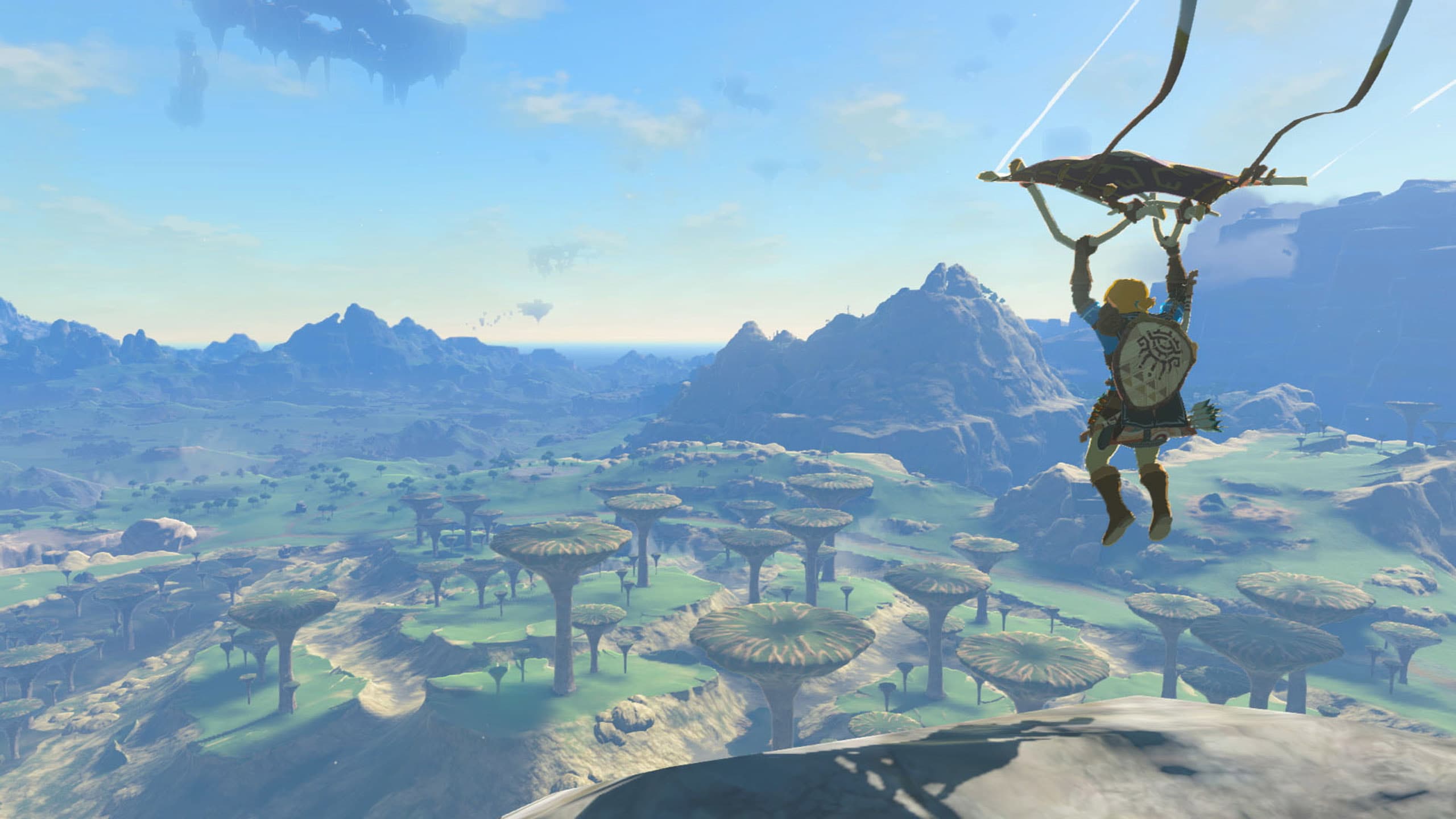Travel Diary 4: Vignettes of Japan
Since before I even got to Japan, I found the prospect of writing about the place intimidating. How to summarize? How to say anything when so many others have said so much?
Back in college, I took a class on the literature of journeys, in which I discovered an author I treasure: the renowned haiku poet Matsuo Bashō. Allow me to begin this post by quoting a preamble to one of his collections:
My records are little more than the babble of the intoxicated and the rambling talk of the dreaming, and therefore my readers are kindly requested to take them as such.
Staring at stone
One of the first things that struck me, a few days after arriving in Japan, was a big rock.
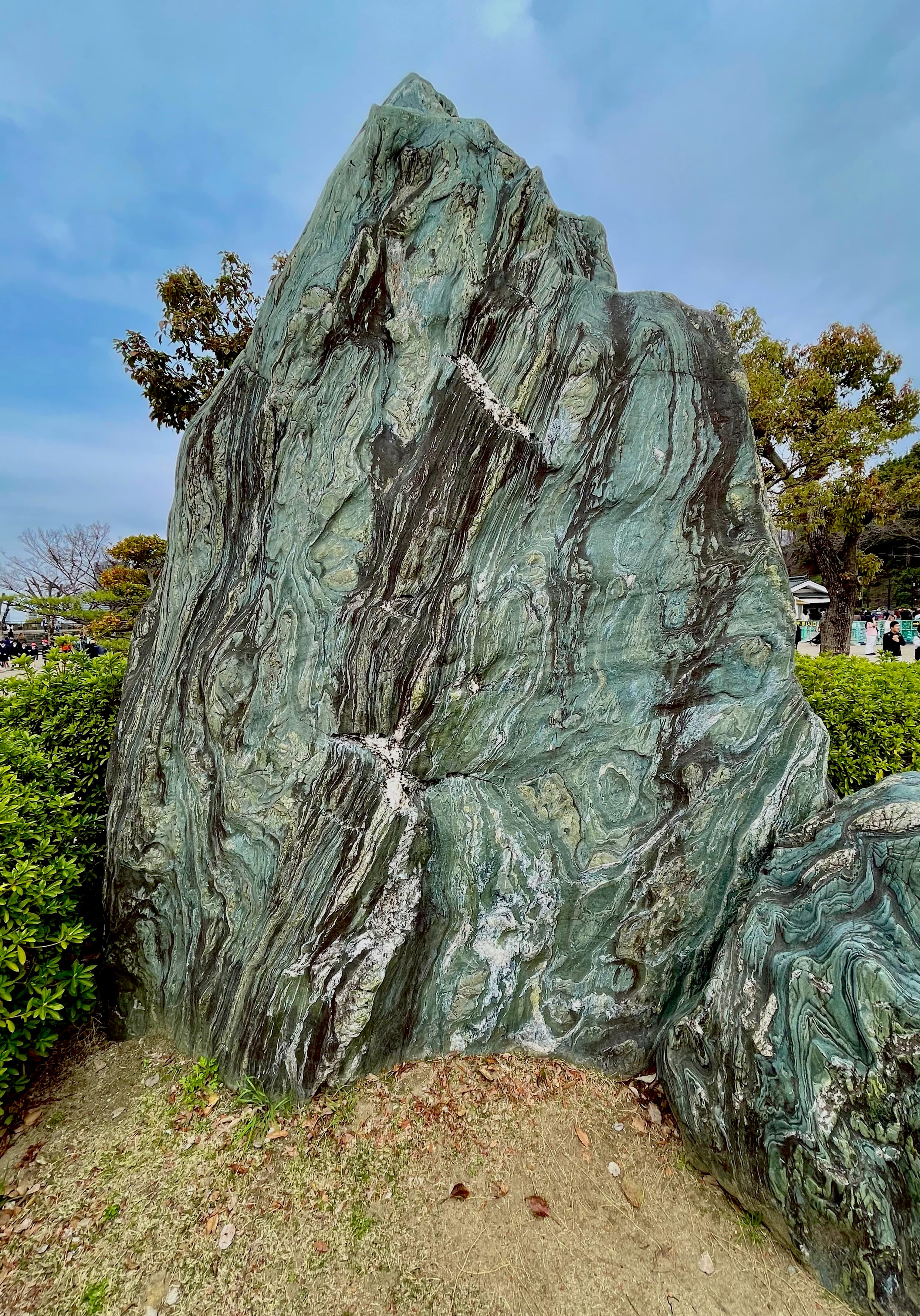
A jade-green monolith positioned directly in front of Osaka Castle, the stone inexplicably drew me in as swarms of tourists jostled around to capture castle selfies. Perhaps a little delirious with residual jetlag, I stared into the stone's swirling patterns, mesmerized by how the whorls and soft, white surfaces looked just like a bird's-eye view of the ocean—the glimpses that we terrestrial creatures only see from airplanes.
I must have stood there and stared for several minutes, ruining many a selfie. I had to somehow capture the depths of what I saw, so I took a closeup and edited it heavily to draw out the iridescent detail that lurked beneath the seemingly dull surface.
This hypersaturated photo was the result. Can you see the hypnotic beauty that captivated me?
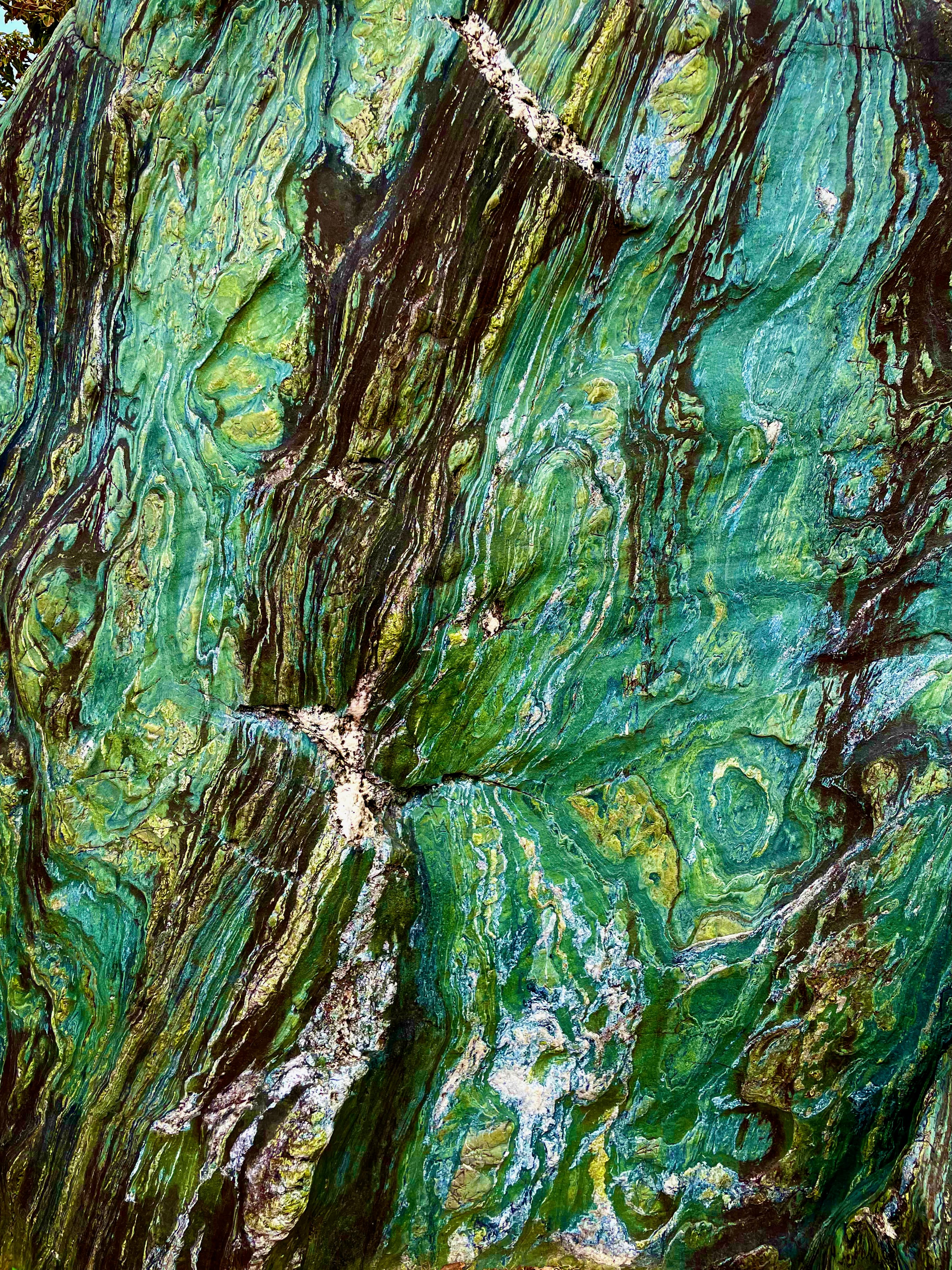
Kawayu Onsen
Days later, we set off on an ancient pilgrimage trek: the Kumano Kodo, a route winding through the mountains of the Kii peninsula to connect a series of shrines. Initially traversed by monks and aristocrats, the route became popular among commoners in the medieval era, before fading into relative obscurity until recent decades.
We stopped for two nights at Kawayu Onsen—a tiny riverside hamlet accommodating visitors to the area. In early spring, the air was crisp and the cypresses cloaked in mist, while early blooms of sakura (cherry blossoms) hung over the river outside the hostel. Steam rose all day from the natural hot spring tucked into the river.
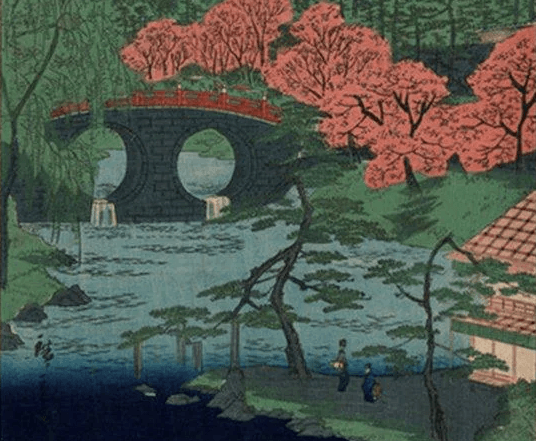 The Megane Bridge at Ōtani, by Utagawa Hiroshige
The Megane Bridge at Ōtani, by Utagawa HiroshigeKawayu was also home to two of my favorite individuals in Japan: Kohe, the innkeeper, and Rum, his spirited but needy dog.
In general, I found Japanese people to be kind and friendly, but often a bit formal and distant. Kohe, by contrast, emanated a countryside warmth that I found endearing. He had a remarkable ability to communicate in English while using as few words as possible:
"Hot spring. River. Walk. Bridge. Cross."
"Other spring. Walk. Shovel. Dig."
"Dinner. Hot pot. Here. 6pm."
Despite the hostel's humble facade, dinner was luxurious, featuring hot pot, tempura, sushi, rice, local greens, and a fried fish from the river. The dining room inexplicably had a full rock band setup, including guitars and a drum set. A Mexican band played over the speakers. I found the music on Shazam, and it was by an obscure artist with only a few thousand streams—where and how did Kohe find this band?

We met Rum on the way back from the first day's hike, whimpering and barking for attention outside the door. Kohe had driven to the nearby grocery store to grab mushrooms, and she missed him. There was something about her sweet, forthright nature that stole our hearts away.
Koguchi
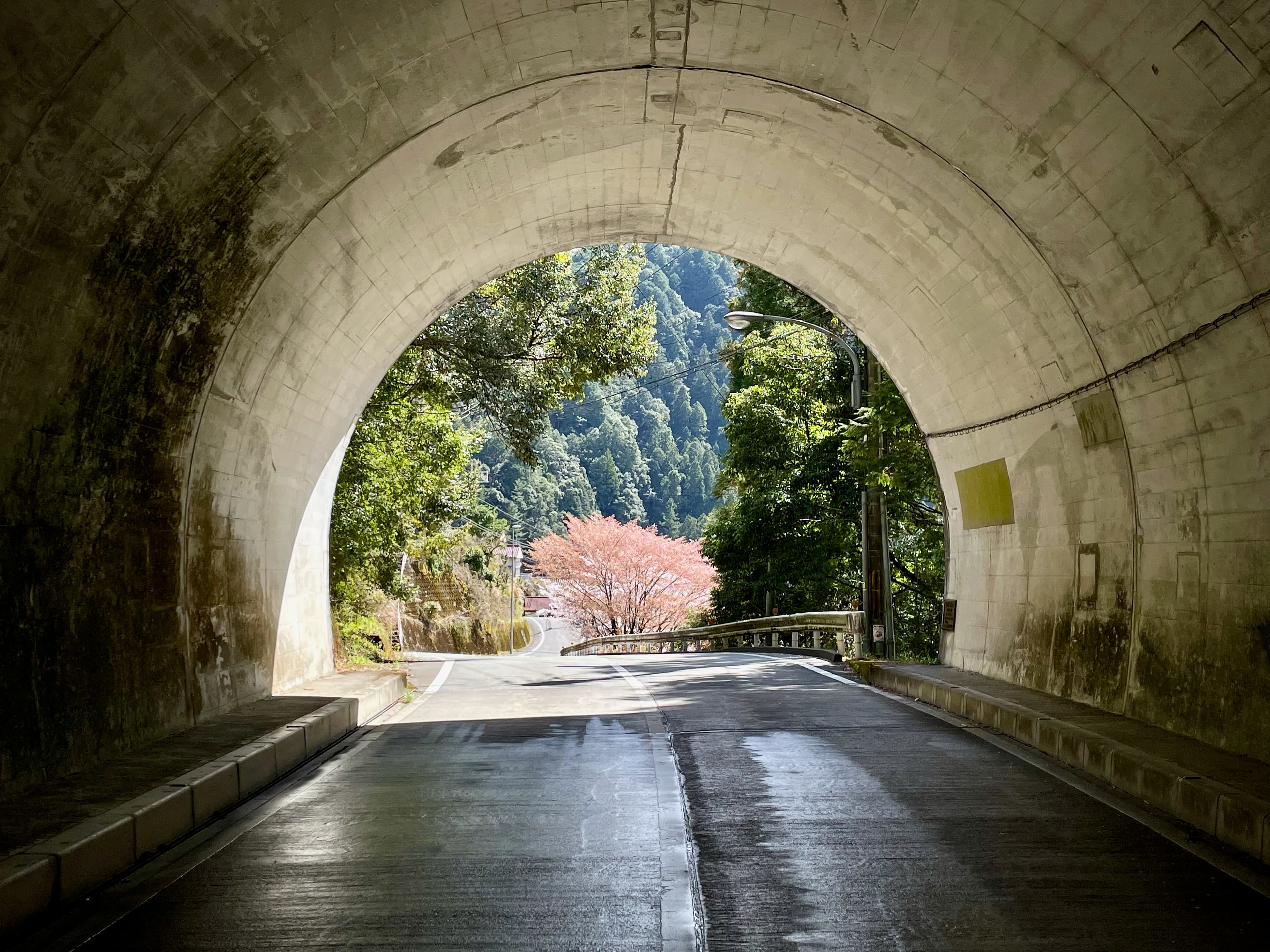
The day after arriving in Kawayu Onsen, we finished our hiking early and found ourselves waiting for the bus for three hours in the small village of Koguchi. Indulging in a pumpkin caramel ice cream, we sat in the town's main park, which lies between a Shinto shrine and a gushing river. Cherry blossoms in half-bloom were scattered throughout. Emeline laid in the grass to take a nap in the sun, while I stayed in the cool shade, reading and jotting notes.
Not a single person was audible or visible for those few hours. In the middle of one of the most popular treks in Japan, I found peace and solitude. A kite continuously circled overhead—what it sought I couldn't tell. At one point, a raven drifted into the kite's domain, and the kite chased it down menacingly, shrieking a piercing cry to scare it off.
I was already two days into the hike, but somehow, this was the moment I finally felt an unabated connection with my surroundings. There's something about being on a trail, in constant motion, that prevents me from settling and absorbing my environment. I need stillness.
Besides that, I need solitude, too—the presence of others always knocks me out of myself. I find myself contemplating what they're thinking and feeling. As a result, being on a popular trail comes with mixed feelings. I delight in being out in the woods somewhere, but the constant passing of people makes me unable to get outside my head. The park in Koguchi granted me the still and quiet I needed, when I didn't even realize I needed it.
After a while, we wandered towards the flowing river and sat on stone steps overlooking a tiny beach. We saw a lot, sitting still on those steps...
Two cranes lazily made their way down the river.
A farm dog barked at us incessantly, the other two dogs sniffing around unfussed.
Fields were covered in purple wildflowers.
Suddenly, a tiny, shiny blue kingfisher darted to and fro!
Hanami
Hanami, the Japanese tradition of viewing and picnicking under sakura in the spring, dates back over a thousand years. It's serious business: these days, the Japan Meteorological Agency provides daily updates of when the blossoms will reach their peak across the country.
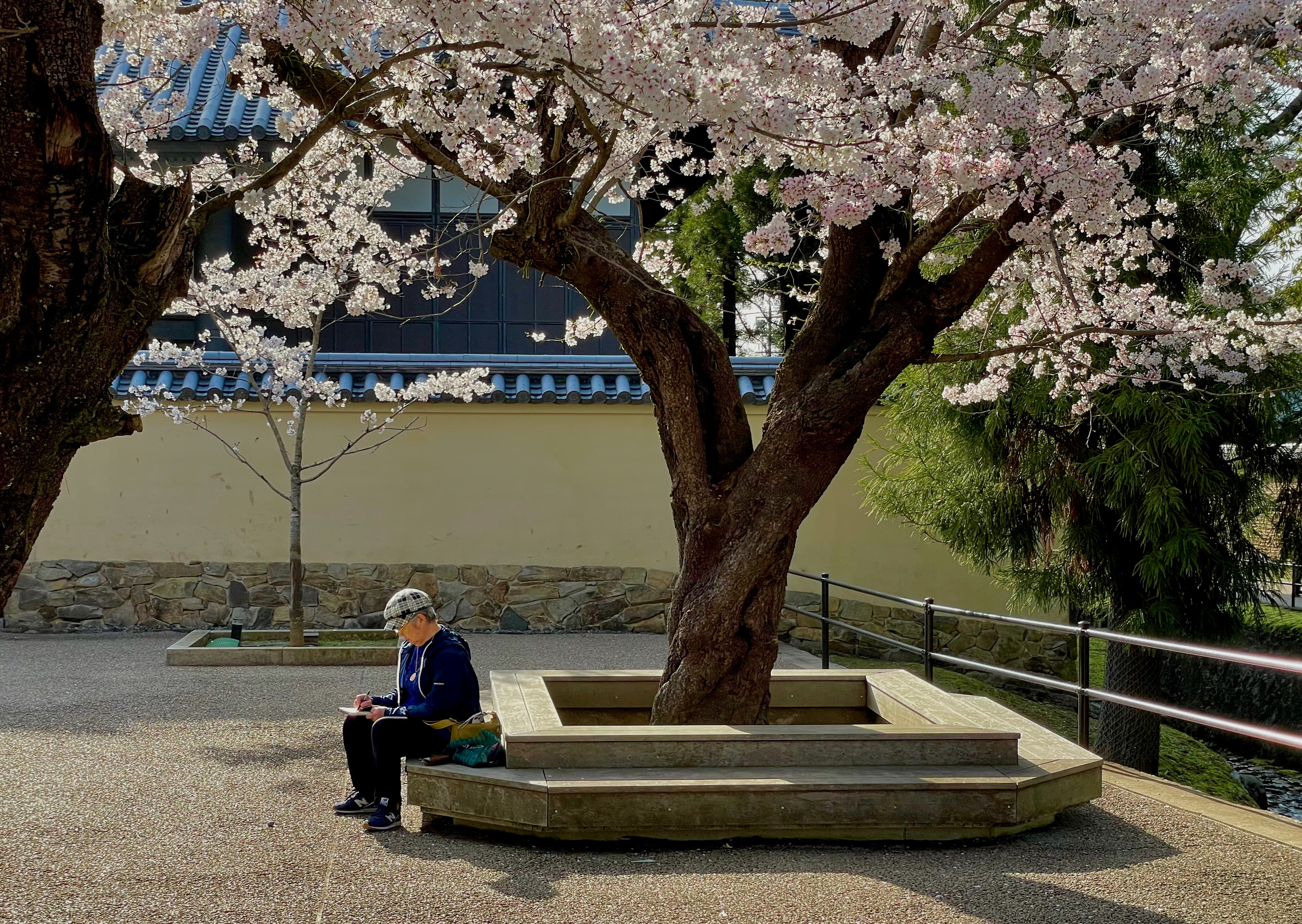
During my time in Japan from early to mid-spring, the sakura were a consistent presence, their gradual blossoming a marker of time's passage. When I arrived, a few shy buds peeked out from naked branches. A week or two later, the adolescent pink-and-white flowers popped everywhere I looked. A week or two after that, when I was in Kyoto and Nara, the branches were heavy with blossoms, which started to dramatically detach and drift in gusts of wind like natural confetti.
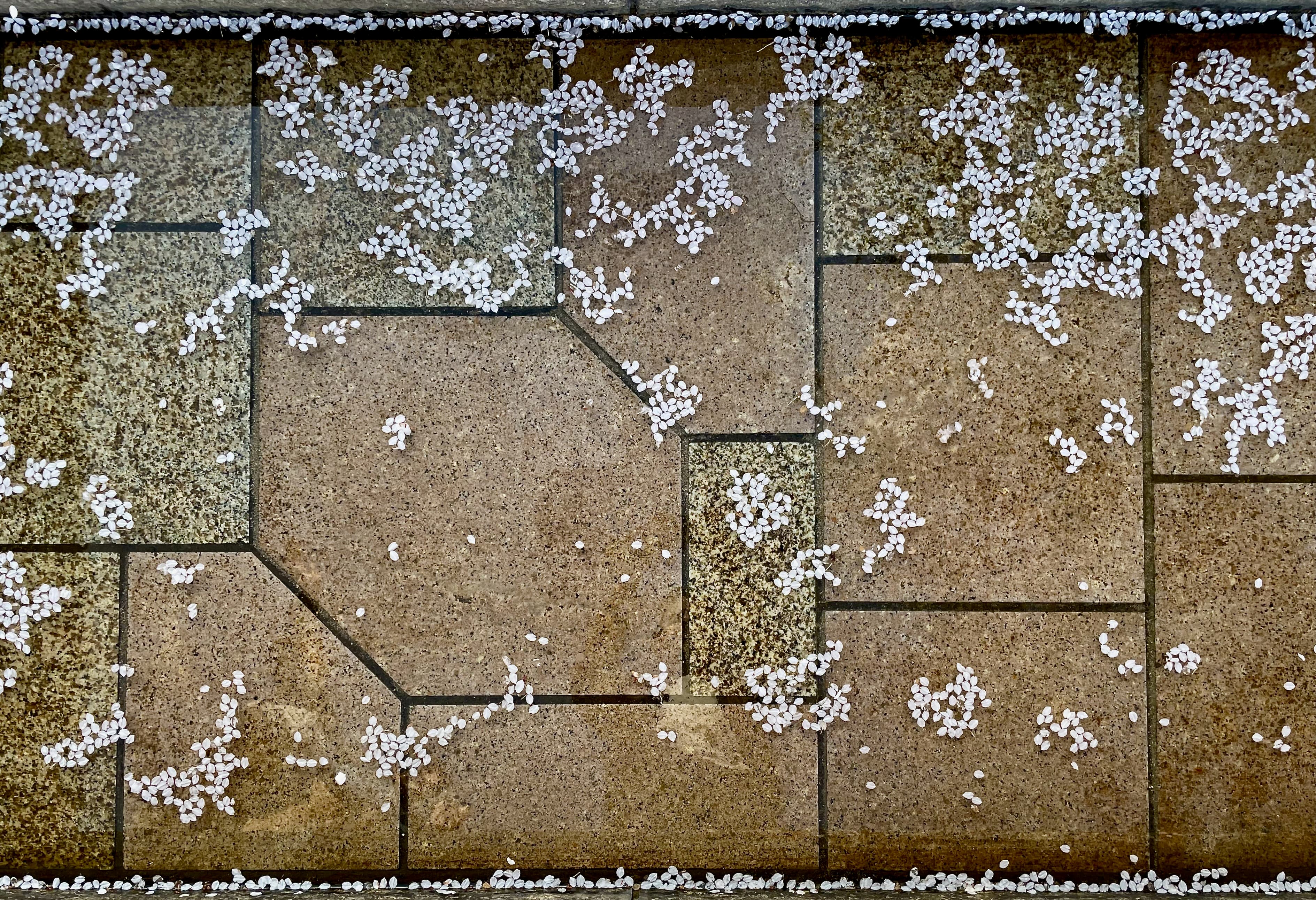
In the past century, the tradition has been exported across the world, as cultivars of sakura took root across Europe and the United States. The first cherry blossoms were planted in Brooklyn and Washington, D.C. in the 1910s, as gifts from the Japanese government. I found the history of the many years it took to successfully send and plant sakura in D.C. particularly interesting.
Tokyo's buzz
One of my last weeks in Japan was spent in Tokyo staying with a few friends, exploring the neighborhoods and socializing. A shocking number of people I knew were in the city this spring—the first spring the country's been open to tourism since 2019. We made plans with friends and acquaintances in the city, and even ran into people we knew on the street.
We ended up spending many hours at a Denny's, where the salmon breakfast and unlimited coffee provided a homely atmosphere.
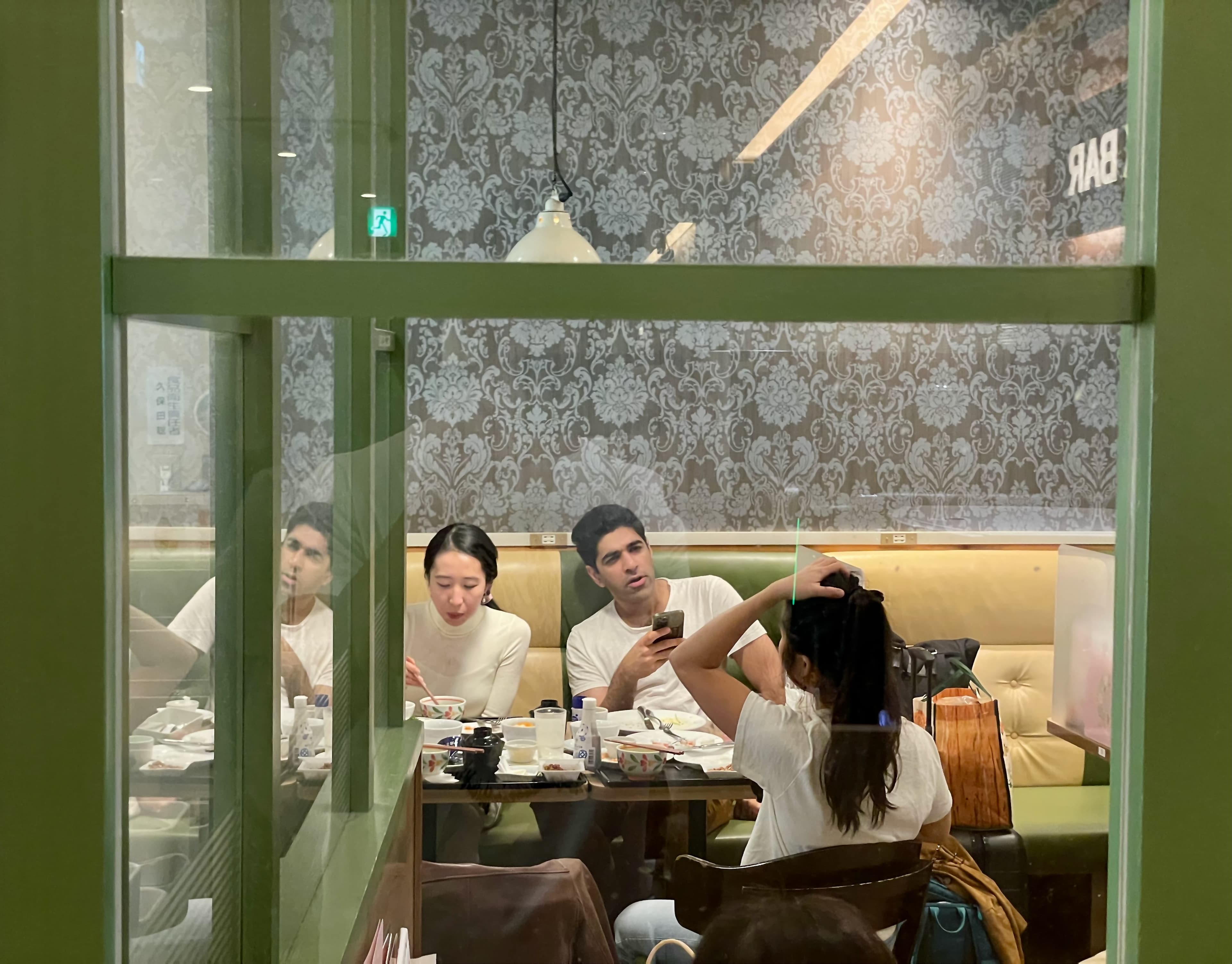
Travel can be draining. Weeks and weeks on the road lead one to feel subconsciously unsettled, and there were moments I started to feel worn down, vulnerable. After one strange, sleepless night, I got up at 5am and went for a walk.
I sat at a bench right beneath Tokyo Tower and meditated for a few minutes. Birds flitted around me, and a gong at the Buddhist temple nearby sounded repeatedly in the distance.
I got up after a while and made my way to that temple, catching monks going about the morning's routines in a perfunctory manner. It felt like I was looking for something, but I wasn't sure what.
Wandering on, I came across a breathtaking sight, which made me suddenly feel like I had found what I was looking for. A moment of clarity.
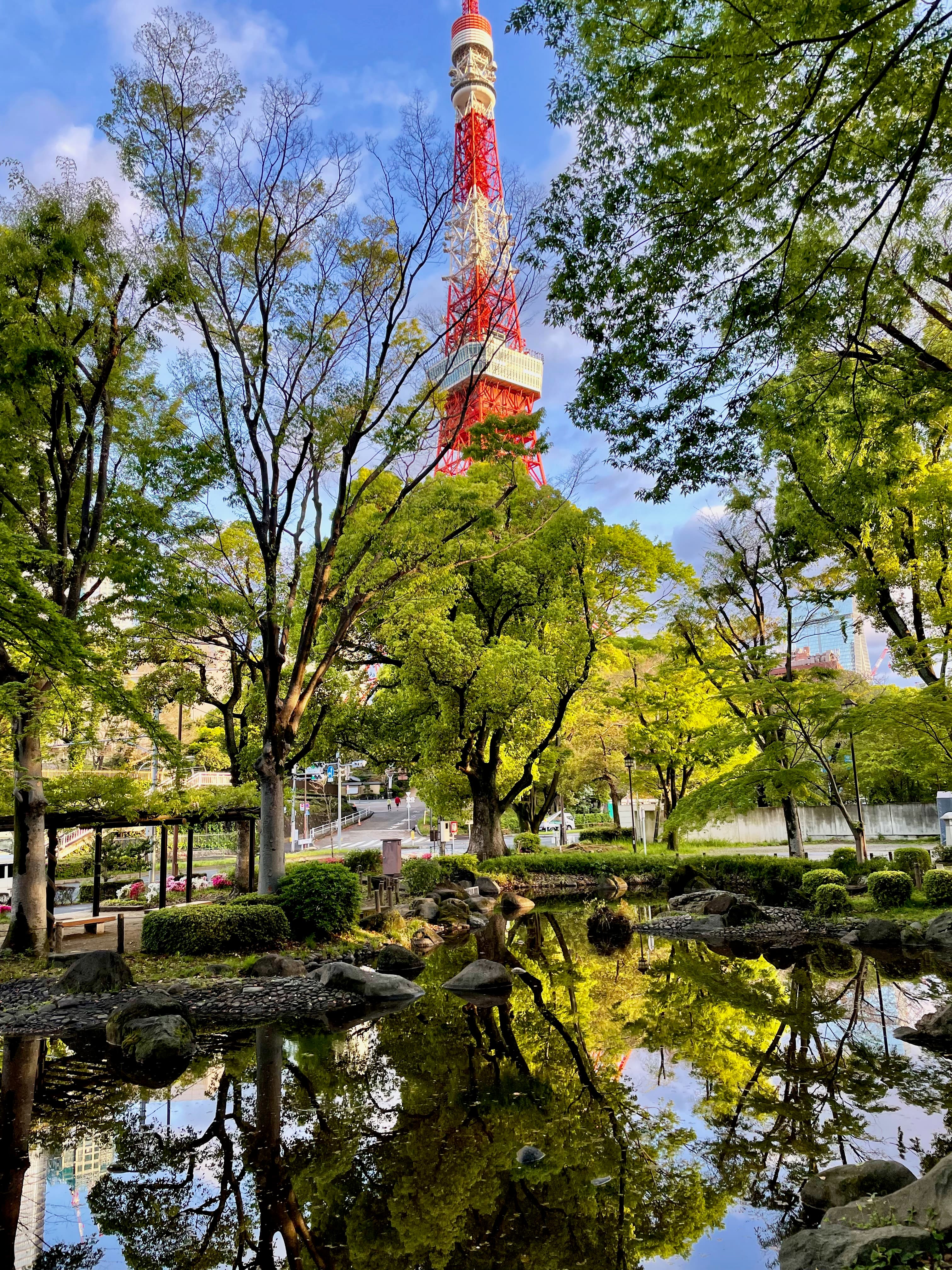
Okinawa
My last week in Japan was spent nestled by a beach in Okinawa. One day, I went swimming in the afternoon, traversing to adjacent beaches, swimming when I could, walking on painfully jagged but occasionally moss-covered rock when the water got too shallow. The turquoise waves lapped against the shores, pleasantly chilly in the sun, as I made my way through. There were few signs of life, and a rusty, abandoned building loomed eerily overhead.
I emerged onto the second beach over, which was utterly empty and seemed inaccessible except by sea: no paths led into the bush-choked hills above. I plopped onto the sand and stared out at the ocean.
The outlines of two distant islands graced the horizon, curving sinuously above the water. A few hundred feet away from shore, waves broke on a sandbar, occasionally erupting froth upward like a volcano. The broken waves became tame and placid by the time they reached me.
Looking out over the water, questions emerged that I hadn't entertained in years. "What am I doing?" I asked myself. I meant it in the biggest, most profound way, suddenly feeling small compared to the expanse ahead of me. Where was I headed? Why?
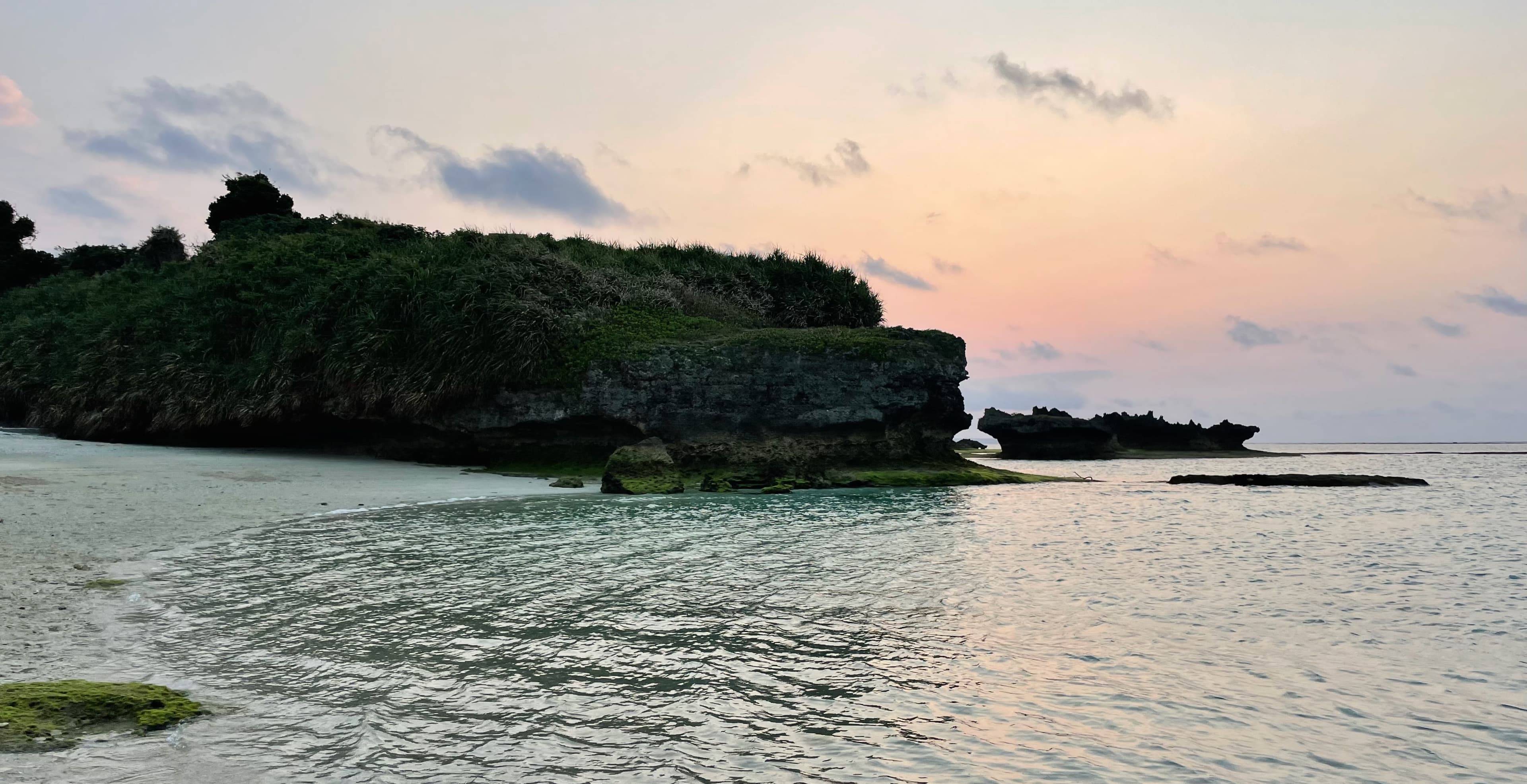
I found no answers that day. But I love the moments when deep questions emerge spontaneously, articulated with clarity and deeply felt.
I recall another moment like this almost ten years ago, sitting at my desk during my last semester in college, looking out at treetops while studying something for a philosophy class. A precise question struck me: "Why does anything exist?"
I stared out the window, stunned. I felt the enormity of this question in my bones, astonished at the miracle of existence itself.
Then I laughed at myself, got up, and went about my day.
An odd home
It was uncanny coming back to New York after so long spent abroad. Little things I'd grown accustomed to in this city felt completely new again—overhearing eccentric conversations, constantly avoiding stepping in dog shit on the street. The odd signs of returning to an odd home.
Jetlagged, I woke up at 6am the day after I returned and went to Coppelia, a 24-hour Cuban diner, where I was the first customer of the day. The staff, relaxing in the back, sprang into motion at my arrival.
I ordered a breakfast burrito. When it arrived, I fumbled over how to thank the waiter, almost saying “arigato” as he slid the plate in front of me. I kind of wish I had: his confused reaction would have been amusing.
Biting into the chorizo, I remembered how much I had missed Mexican food these past months. Ramen is one of my favorite dishes in the world, and I enjoyed the freshness of sushi and pickled greens in Japan, but I found myself craving the flavor, spice, and juiciness of an al pastor taco.
A few weeks have passed. I've had my fill of tacos (at least, as best you can in New York), I'm working again, and it sort of feels like I never left at all. The time spent abroad feels dreamlike. And now, I'm spending my subway rides and evenings trying to save the Kingdom of Hyrule like millions of others around the world.
Various details in the newest Zelda game carry an increased poignancy for me now. The in-game landscape is dotted with large cherry blossoms; offering a fruit under each one reveals the locations of various caves you can spelunk into. Link upgrades his health and stamina at goddess shrines, made of ancient, mossy stone much like the shrines I encountered constantly along the Kumano Kodo. Nintendo has infused the game with a Japanese aesthetic and reverence that hits differently for me now.
What does it all add up to? I can't articulate it precisely, but it feels like this trip planted seeds that'll sprout, unfurl, and blossom in the coming months and years. I can't predict what will come, but I'm excited to watch things emerge.
For now, catch me paragliding through Hyrule’s skies, admiring the distant, pastel horizon.
